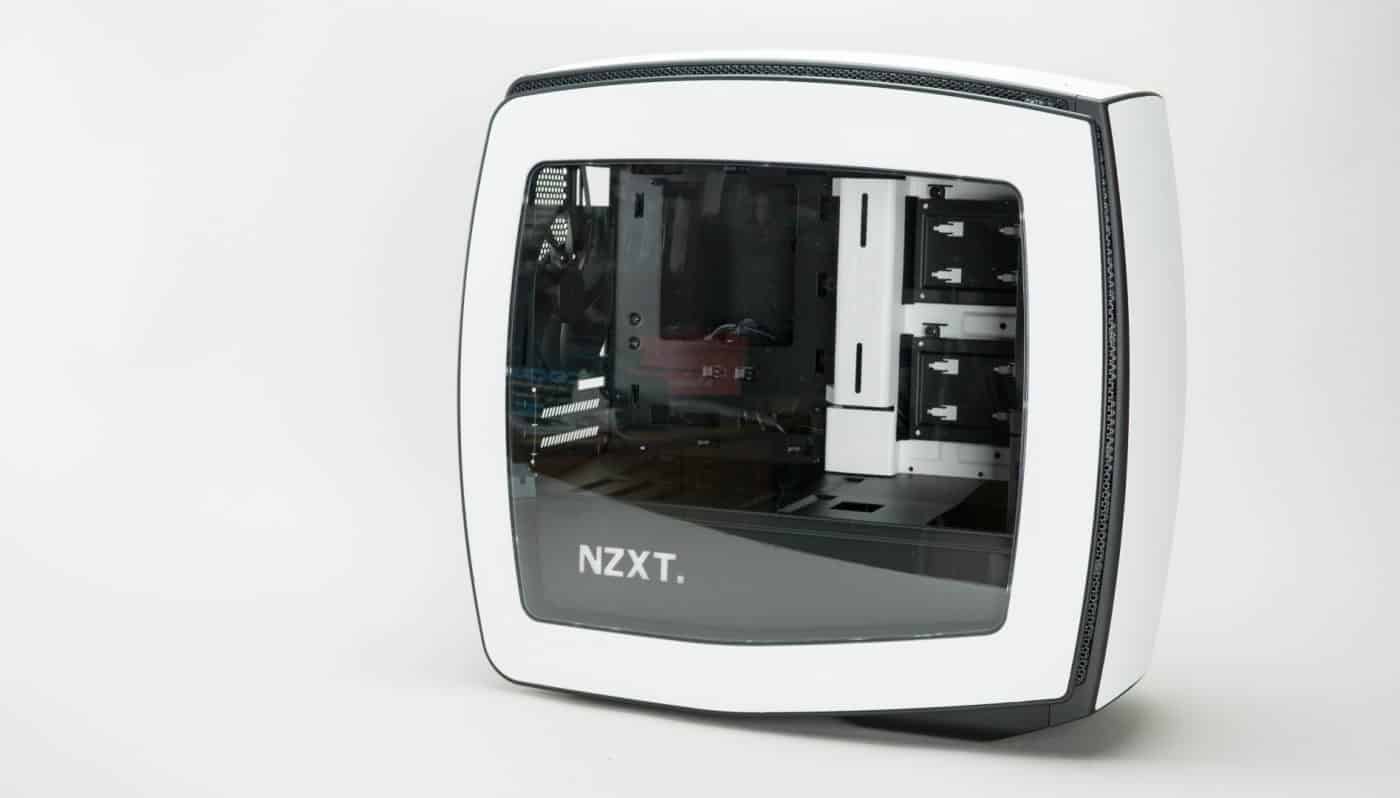NZXT Manta Case Overview
For a full overview of the NZXT Manta case be sure to check out our video below.
The most talked about feature of the Manta is not really a feature at all, but rather it’s defining design characteristic. That is, the curved almost bulging panels on the case. Examining the case from every angle reveals that the Manta has gentle and exquisitely curved panels all around. They are in fact made from steel not plastic like you might have guessed, and are the result of hard work on both the engineering and manufacturing levels. Never before in this industry has a curved side panel been made from steel. Much ado has been made by NZXT about the difficulty in creating a manufacturing process to create these panels. Love them or hate them they are a pretty unique feature. In addition to creating a unique overall aesthetic, the use of steel allows for a really nice paint job to be applied. The paint is a thick matte finish that just plain looks gorgeous. NZXT has taken some hits in the past based on paint, that won’t be the case for the Manta.


Checking out the Manta’s exterior we find there are two intake grills recessed on the sides of the front panel. If you follow the channels they take you up to the top panel where they begin again as intakes or exhausts for the top of the case. Other than the grills, you will only find black plastic accent trim on the sides of the front and top panels and a white NZXT logo near the bottom. Following trend, you will not find 5.25” drive bays or anything like that on the Manta and the result is a really clean look.

The top panel is nearly as clean as the front panel, with a few exceptions. Aesthetically you will find a shallow channel in the middle of the panel with curves that mirror the roof of the Ferrari 458. This is a sleek feature and gives the case some character. To the right you will find the I/O section with two usb 3.0 ports and your audio I/O. On the right you have a simple flush mounted power button and in the center you have an LED light strip that has lights for HDD activity and Power on. You won’t find a reset switch on the Manta, something to keep in mind if you do a lot of overclocking and lock up your system frequently.



The back side panel mirrors the front side panel in it’s bulging curved shape, but does not have the large clear window.

The back panel of the case is where the Manta’s uniqueness kind of dies away. We are left with a standard panel that is basically utilitarian. A standard I/O cutout is neighbors with a grill for a pre-mounted 120mm fan. These are found above a single set of expansion slots under which you will find the PSU cutout. One nice feature of the back panel is the LED lights that are set to illuminate the I/O panel so you can see what your doing back there in the dark.



A lot of internet chatter has been about the actual size of the Manta and whether is really qualifies as SFF (small form factor). Due to it’s shape it has a very large interior capacity (~47L) and a lot of the photos skew the scale of the case. We lined it up with a couple of Phanteks cases, the Enthoo Evolv ITX and the Evolv ATX for a size comparison. As you can see it is just a bit larger than the ITX version which uses the same size mini-ITX motherboard and is a good bit smaller than the ATX which is a mid tower.



